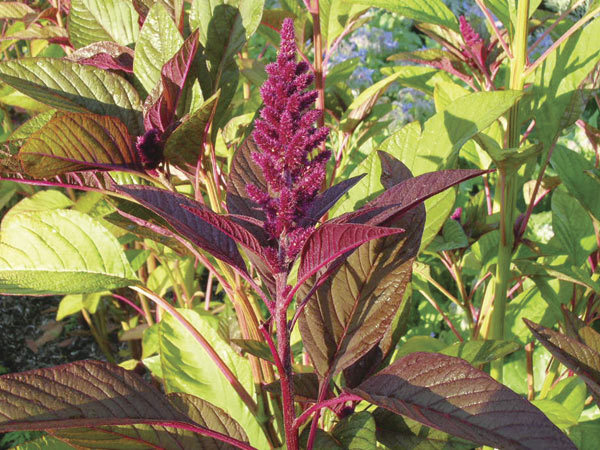Amaranths (Family Amaranthaceae) are seasonal herbaceous plants grown commonly in the tropics.
They are one of the most popular leafy vegetables and their production is spread across different ecological zones.
Common names include African spinach, Indian spinach, spinach, amaranths, Tete (Yoruba).
Origin of Amaranths
Many species probably originated in the Andean region of South America or Mexico and are now widely distributed throughout most tropical areas.
The Ecology of Amaranths
Soils with high organic content and adequate mineral reserves are required for optimum yield although some species are tolerant to a fairly wide range of soil conditions.
The optimum pH range is 5.5-7.5 but some cultivars will tolerate more alkaline conditions.
Most species and cultivars have a high rate of nitrogen absorption and surface dressings of nitrogenous fertilizers are normally required during the period of active growth.
Most species are tolerant of relatively high temperatures and generally thrive within a temperature range of 22-30°C.
The Botany of the vegetable
It is usually a short-lived annual plant that grows up to 1m in height. The stem is erect, often thick and fleshy.
The leaves are variable in shape, green or purple, normally alternate, and could be up to 30cm long.
They are lanceolate (lance-shaped) with long stalks. The white-yellow flowers are very small and form long terminal clusters 30 to 40cm in length.
Flowers are also produced on axillary spikes in some species. The seeds are small with shiny testa and either black or brown.
Numerous species and hybrids between both species and varieties exist.
- Amaranthus cruentus L. ( is widely distributed in tropical Africa.
- Amaranthus caudatus L. is a grain crop in Latin America and high rainfall areas of west Africa.
- Amaranthus dubius Mart.ex Thell is mainly grown in Asia and the Caribbean.
- Amaranthus spinosus is distinguished by the spikes in the leaf axils and the inflorescences.
- Amaranthus tricolor which is a native of tropical Asia is also grown in West Africa, particularly Nigeria and the West Indies.
The local Amaranthus species and cultivars are grown by peasant farmers have now been replaced by improved cultivars such as ‘NHAc3’; ‘NHAc13’ and ‘NHA39’
Cultural Practices
Seeds, which are often mixed with dry sand to ensure uniform distribution are normally down broadcast on prepared beds at a rate of 3-10gm^2 (1.5-2kg/ha).
They may also be down on nursery beds and the seedlings transplanted at 10-15cm between plants.
Very vigorous species or cultivars may be transplanted to 30-40cm X 30-40cm square spacing.
Seedlings that were sown broadcast may also be thinned to 15-22cm apart from each way or at more liberal spacings if they have a very profuse branching habit.
A grass mulch is sometimes used for covering freshly sown seeds to protect them from heavy rains.
This mulch may be removed when the seeds have germinated.
Frequent watering is essential for successful cultivation especially when grown in the dry season.
Harvesting of the Veggie
Most species and cultivars grow rapidly and may be harvested 30-50 days from sowing when they are 15-20cm tall.
During harvesting, the whole plant may be uprooted or established plants may be cut back within 15cm of the base to encourage lateral growth, which will provide successive harvests.
Seeds mature in 3-5 months from planting and can be harvested and dried for subsequent planting.
Yields
The entire plant harvested can yield 20-25 t/ha; shoots only (successive harvesting) yield 30-60 t/ha; seed yield is approximately 200kg/ha (esp. A. tricolor)
Its Uses and Nutritional Composition
The nutritional content of the leaves of various species of Amaranthus varies but in general, the leaves of plants of most species contain a high level of vitamin A, calcium, and potassium.
The leaves are used in soup making while the seeds of Amaranthus species are used as food in some tropical areas and protein content of up to 15% has been reported.
The protein is qualitatively superior to that of true cereals because of its high lysine and methionine content.
The only disadvantage of amaranths is their high oxalic acid content which may immobilize some of the calcium presents in the leaf.
Diseases and Pests of Amaranths
The diseases mainly affect the leaves.
One of the diseases is Leaf spot which is caused by Cercospora spp, and Cladosporium spp.
Damping-off caused by Pythium spp and Rhizoctonia spp.
Pests are mainly insects (example, sting bug, mole cricket, Zonocerus variegatus L.) and root-knot nematodes caused by Meloidogyne spp.








